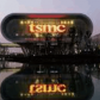In their latest shareholder meeting, TSMC, under the chairmanship of Mark Liu, discussed pressing issues such as the ongoing US-China trade war, climate change, the pandemic, and the conflict between Russia and Ukraine. Liu also hinted at a prospective price hike of 3-6% on TSMC's products.
And thereby contradicting the projected price reductions for processors and graphics cards in 2024. A comprehensive understanding of TSMC's pricing decision is necessary to comprehend its strategic direction.
The ongoing year is marked by the introduction of new costs that have been incrementally increasing over the previous three years. The affordability of hardware is seemingly dwindling, principally due to the inability of TSMC's 5nm technology to offset the escalating costs in terms of density. Only the introduction of 4nm and, more notably, 3nm processes might offer a more profitable pricing structure for manufacturers, though this would be restricted to small and medium-sized chips, necessitating meticulous wafer management.
TSMC is also confronted by demand and component challenges. The company has acknowledged a substantial surge in orders, specifically from NVIDIA, as was previously predicted. However, fulfilling these orders is not confined to chip production, as TSMC contends with issues like high substrate prices and limited availability.
In light of the considerable volume of orders TSMC is currently processing, logistical complications are anticipated in keeping up with demand. This situation is reminiscent of 2021, when TSMC grappled with substantial demand and stock shortages, with products being sold out in advance. While the current situation primarily involves demand from NVIDIA, it appears that NVIDIA is establishing a dominant market position.
By 2024, TSMC plans to introduce a 3-6% price increase per wafer, a noteworthy development. Additionally, the company is discontinuing its past offers and discounts linked to prepayment, capacity reservation, and similar situations. This implies that the price increase extends beyond a fixed percentage, with the discontinuation of discounts magnifying the issue. The correlation between wafer yield, chip quantity, and cost is becoming increasingly complex.
Since the end of 2020, the price per wafer has surged by over 40%, notwithstanding a transient decrease earlier in the year. This has led to a rise in chip prices.

